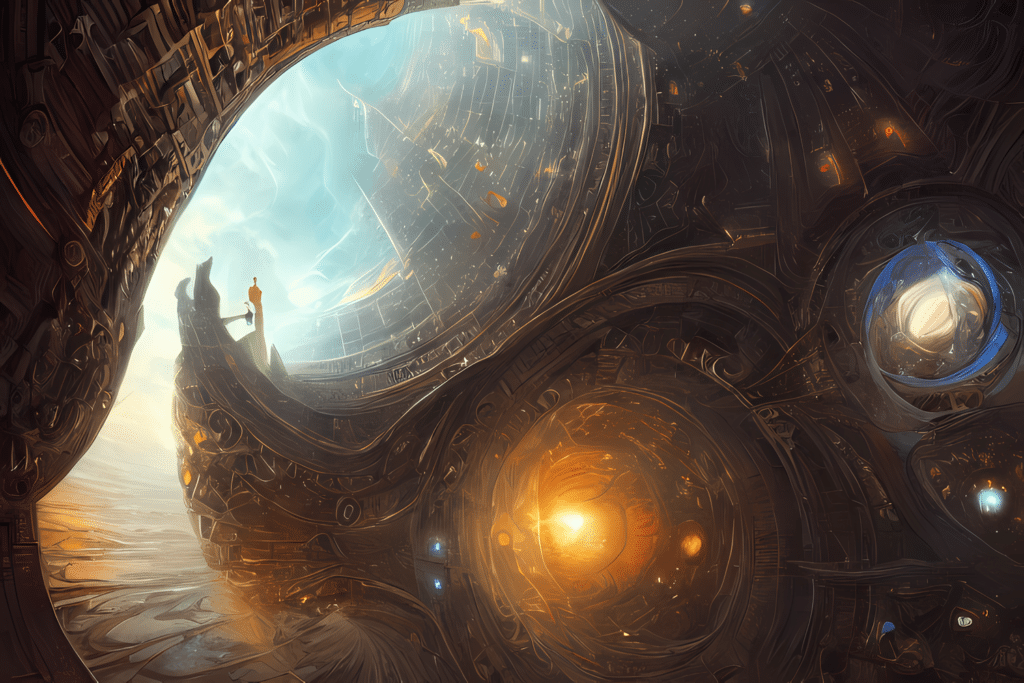Are you tired of blurry or pixelated images? Do you want higher resolution images without sacrificing detail or sharpness? Look no further than stable diffusion image upscal, the cutting-edge technique for upscaling images to higher resolutions while maintaining quality.
I. The Science Behind Stable Diffusion
Stable diffusion is a technique that uses deep learning models to learn the underlying patterns and structures of an image at a low resolution, and then uses that knowledge to upscale the image to a higher resolution while minimizing artifacts and preserving details. The process involves taking a low-resolution image as input, passing it through the latent space of a trained model, and generating a high-resolution image as output.
To achieve optimal results, stable diffusion uses a combination of noise injection, progressive upsampling, and advanced regularization techniques to ensure the output image is stable and free of distortions. This method is particularly effective for upscaling images that contain fine details, such as text or patterns, and can produce results that are virtually indistinguishable from the original high-resolution image.

Benefits of Using Stable Diffusion
- Higher resolution images without sacrificing quality
- Preserving fine details and sharpness
- Minimizing visual artifacts and distortions
- Enhancing the appearance of low-resolution images
- Improving the overall visual appeal of your content
II. The Basics of Image Upscaling
Image upscaling is the process of increasing the size or resolution of an image. This can be done for a variety of reasons, such as improving the visual quality of an image, preparing it for printing, or ensuring it is compatible for use on different devices or platforms.
There are several approaches to image upscaling, including interpolation, fractal-based scaling, and machine learning-based techniques such as super-resolution and stable diffusion.
What It Is and Why It’s Important
Upscaling an image is important because it allows you to use low-resolution images in high-resolution settings without sacrificing visual quality. For example, if you need to display an image on a large screen or print it in a high-quality format, upscaling can help you achieve the desired result.
Different Approaches to Image Upscaling
Interpolation is a basic technique that involves filling in the gaps between pixels to increase the size of an image. It is a simple but often imperfect method that can result in blurry or pixelated images.
Fractal-based scaling is a more advanced method that uses mathematical formulas to generate images based on the patterns and structures present in the input image. While it can produce high-quality results, it is generally considered more complicated and time-consuming than other methods.
Machine learning-based techniques, on the other hand, use deep learning models to learn the patterns and structures of an image and generate new, high-quality images based on that knowledge. Super-resolution and stable diffusion are two approaches that have gained popularity in recent years for their ability to produce sharp and detailed images at high resolutions.
III. Stable Diffusion vs. Other Upscaling Techniques
Pros and Cons
The main advantage of stable diffusion over other upscaling techniques is its ability to produce high-quality images that are virtually indistinguishable from the original high-resolution image. It also provides greater control over the upscaling process, with options for fine-tuning the output image to your specifications.
However, stable diffusion can be computationally expensive and may require significant processing power and memory to achieve optimal results. It also requires a trained model, which may take some time to develop depending on the complexity of the images you are upscaling.
When to Use Stable Diffusion
Stable diffusion is well-suited for upscaling images that contain fine details or patterns, such as text, graphics, or photographs. It is also useful for enhancing the visual quality of low-resolution images or preparing images for use on high-resolution screens or prints.
IV. Implementing Stable Diffusion
Tools You’ll Need
- A deep learning framework such as TensorFlow or PyTorch
- A trained stable diffusion model, either pre-trained or custom-built
- An appropriate computing environment with sufficient processing power and memory
- An image upscaling software or library that supports stable diffusion
Tips for a Successful Upscale
- Use high-quality source images to achieve the best results
- Experiment with different settings and parameters to find the optimal balance of quality and speed
- Upscale images only as necessary; avoid upscaling unnecessarily as it can degrade image quality
- Consider using stable diffusion in combination with other upscaling techniques for even greater control and customization
V. Conclusion: Why Stable Diffusion is the Future of Image Upscaling
Stable diffusion is a revolutionary technique that is changing the way we approach image upscaling. Whether you are a professional photographer, graphic designer, or content creator, stable diffusion can help you achieve higher-quality images with greater efficiency and control.
By using stable diffusion to upscale images, you can enhance the visual appeal of your content, improve the quality of low-resolution images, and prepare images for high-resolution settings such as print or large screens. With the right tools and techniques, stable diffusion can be a powerful addition to your image enhancement workflow.
Useful Tips
- Only upscale images that need it.
- Use high-quality source images for the best results.
- Experiment with different settings to find the perfect balance.
- Upscale images only as necessary; avoid upscaling unnecessarily as it can degrade image quality.
- Consider using stable diffusion in combination with other upscaling techniques for even greater control and customization.
Related Questions
How does stable diffusion compare to other upscaling methods?
Compared to other upscaling methods such as interpolation and fractal-based scaling, stable diffusion generally produces higher quality images with sharper details and fewer distortions. It is also more flexible and customizable, allowing you more control over the upscaling process. However, stable diffusion can be computationally expensive and may require significant processing power to achieve optimal results.
What types of images are best suited for stable diffusion?
Stable diffusion is best suited for upscaling images that contain fine details or patterns, such as text, graphics, or photographs. It is also useful for enhancing the visual quality of low-resolution images or preparing images for use on high-resolution screens or prints.
Are there any downsides to using stable diffusion for image upscaling?
One potential downside of using stable diffusion is that it can be computationally expensive and may require significant processing power to achieve optimal results. Additionally, itmay require a trained model, which can take time to develop. However, the benefits of stable diffusion in terms of producing high-quality images with sharp details and minimal distortions make it a popular choice for professionals in the photography, graphic design, and content creation industries. With proper tools and techniques, stable diffusion can be a game-changer in your image enhancement workflow, providing greater efficiency and control. Consider incorporating stable diffusion into your work to stay ahead of the curve in the rapidly-evolving field of image upscaling.
VI. Conclusion: Taking Your Image Upscaling to the Next Level with Stable Diffusion
In the world of image processing, upscaling has always been a challenge. Traditional upscaling methods, such as interpolation, can cause artifacts and blurry images, making it difficult to preserve the details and quality of the original. However, the advent of deep learning has opened up a new frontier in image upscaling, providing techniques such as stable diffusion that produce high-quality, sharp images with minimal distortion.
Stable diffusion is a cutting-edge algorithm that takes the advantages of deep learning to upscale low-resolution images, while preserving details and sharpness – making it suitable for a variety of applications like graphic design, photography, and content creation. It combines the use of noise injection, progressive upsampling, and advanced regularization techniques that produces an output image that is stable and free from visual artifacts.
With the right tools and techniques, stable diffusion can be a game-changer in your image enhancement workflow. However, it’s important to have proper computing resources and to use high-quality source images to achieve the best results. By using stable diffusion in combination with other upscaling techniques, you can maximize your control and customization opportunities – ensuring you get the ideal output for your specific needs.
Stable diffusion enables a new frontier in image upscaling, changing the game for professionals across various industries. From enhancing low-resolution images to preparing high-quality prints, stable diffusion is the perfect solution for anyone looking to take their image upscaling to the next level. So, try stable diffusion today and experience incredible results that push the boundaries of what’s possible in the world of image upscaling!

















